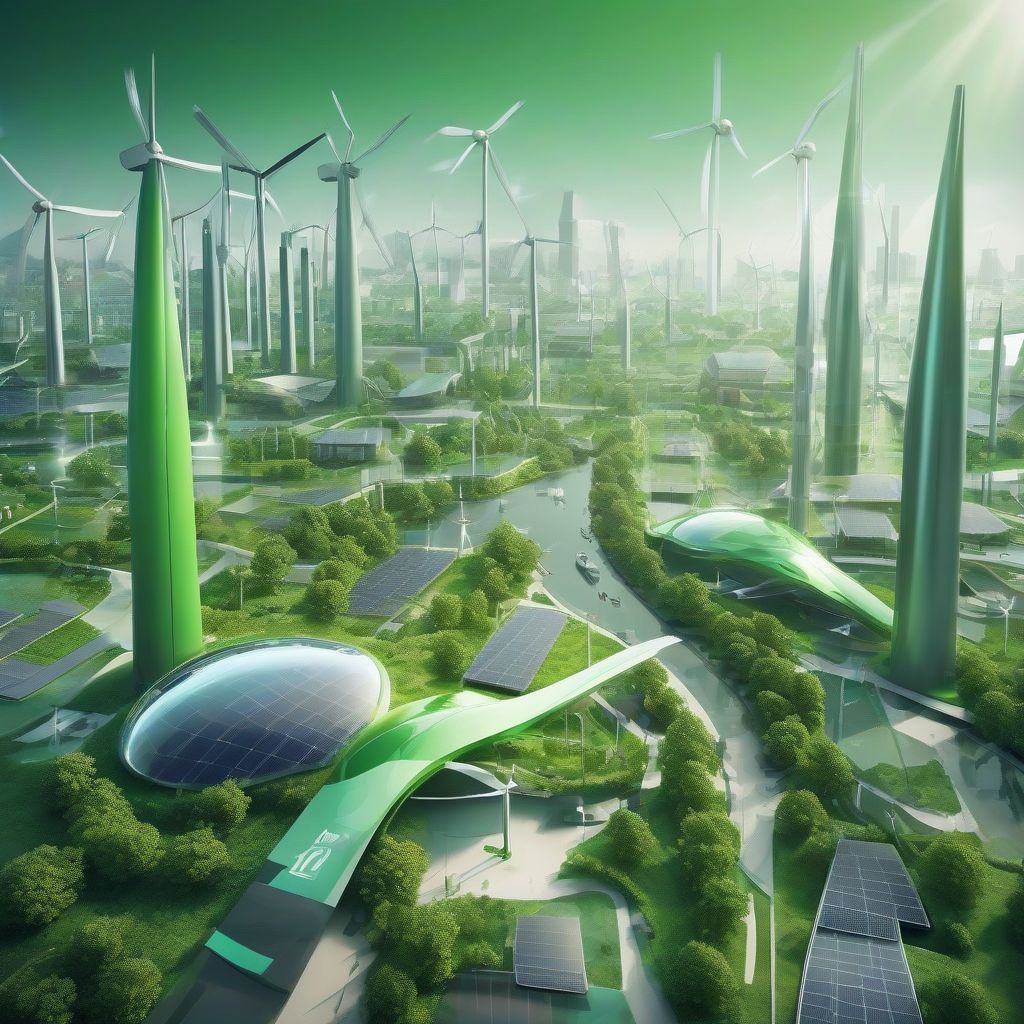Imagine a world where our cities breathe fresh air, our oceans teem with life, and the threat of climate change is significantly diminished. This isn’t a utopian dream, but a potential reality driven by the relentless innovations in green technology. From capturing carbon dioxide to revolutionizing transportation, green tech is paving the way for a sustainable future by drastically reducing our carbon footprint. But how exactly does it achieve this? Let’s delve into the specifics.
Understanding the Carbon Challenge
Before we explore the solutions, it’s crucial to understand the problem. Carbon emissions, primarily from burning fossil fuels, trap heat in the atmosphere, leading to global warming and climate change. This affects everything from weather patterns to sea levels, posing significant threats to ecosystems and human societies. As a nutritionist and meal prep coach, I see the impact of climate change on food security firsthand. Changing weather patterns can disrupt crop production, leading to food shortages and price hikes. This underscores the urgency of embracing green tech solutions.
Green Tech Innovations: A Deep Dive
Renewable Energy: Powering a Sustainable Future
Renewable energy sources like solar, wind, hydro, and geothermal are replacing fossil fuels, significantly reducing carbon emissions. Solar panels convert sunlight into electricity, while wind turbines harness the power of the wind. Hydropower utilizes the energy of flowing water, and geothermal taps into the earth’s internal heat. These clean energy sources produce little to no greenhouse gases, making them a cornerstone of a sustainable future.
Energy Efficiency: Doing More with Less
Energy efficiency isn’t just about using less energy; it’s about maximizing the output from the energy we do consume. Innovations like smart grids, energy-efficient appliances, and green building designs minimize energy waste, effectively reducing our carbon footprint. Think of it like optimizing your meal prep: using the same ingredients to create more meals, minimizing food waste.
Carbon Capture and Storage: Trapping the Culprit
Carbon capture and storage (CCS) technologies capture CO2 emissions from industrial sources before they enter the atmosphere. The captured CO2 is then transported and stored underground, effectively preventing it from contributing to climate change. This is a critical technology for industries that are difficult to decarbonize, such as cement production.
Sustainable Transportation: Revolutionizing How We Move
The transportation sector is a major contributor to carbon emissions. Green tech is revolutionizing this sector with electric vehicles (EVs), biofuels, and public transportation improvements. EVs powered by renewable energy offer a zero-emission alternative to gasoline-powered cars. Biofuels, derived from sustainable sources, reduce the reliance on fossil fuels. Investing in efficient and accessible public transportation further minimizes the environmental impact of travel.
Green Building: Constructing a Sustainable Habitat
Green building practices focus on minimizing the environmental impact of construction and operation. These practices include using sustainable materials, maximizing energy efficiency, and reducing water consumption. Green buildings not only reduce carbon emissions but also create healthier and more comfortable living spaces.
The Impact of Green Tech: Measurable Results
The impact of green tech is not just theoretical; it’s producing tangible results. Countries that have invested heavily in renewable energy have seen significant reductions in carbon emissions. For instance, studies show that the growth of wind and solar energy has prevented millions of tons of CO2 from entering the atmosphere. Furthermore, the cost of renewable energy has dramatically decreased, making it a more economically viable option.
 Green Tech Reducing Carbon Emissions
Green Tech Reducing Carbon Emissions
The Role of Individuals in Embracing Green Tech
While large-scale initiatives are crucial, individual actions also play a vital role. We can all contribute by making conscious choices, such as using energy-efficient appliances, reducing our reliance on cars, and supporting businesses that prioritize sustainability. Just as making healthy food choices contributes to personal well-being, embracing green tech contributes to the health of our planet.
Conclusion
The innovations in green tech offer a powerful arsenal against climate change. From renewable energy to sustainable transportation, these technologies are transforming our world and paving the way for a sustainable future. By understanding the power of these innovations and making conscious choices, we can all contribute to a healthier planet for ourselves and future generations. What are your thoughts on the role of individual action in supporting green tech initiatives? Share your perspectives in the comments below!



